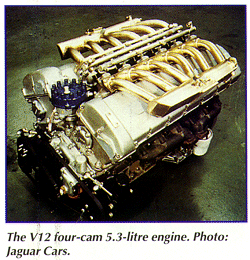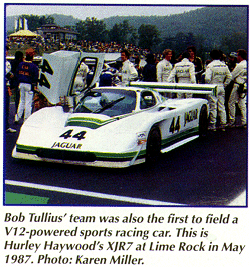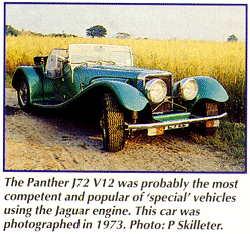|
|
 |
[ Main ] [ 1 ] [ 2 ]
[ 3 ] [ 4 ] [ 5 ] [ 6 ] [ 7 ] [ 8 ] [ 9 ] [ 10 ] [ 11 ] |
Electronic ignition - an essential ingrediantA 12 cylinder engine running at 6000 r.p.m. has just 1.666 thousandths of a second between sparks. It is asking rather a lot of a contact breaker to function at this rate and give acceptable life so it was obvious right at the outset that the V12 would need some sort of electronic ignition system. Fortunately Lucas had already developed their OPUS system for high revving racing engines so there was no need to look any further and with minor changes over the years it served the V12 reasonably well for its first decade, running with conventional centrifugal and vacuum control of ignition timing.The HE with its 12.5:1 compression and lean mixtures was even more demanding but by this time constant energy ignition systems were available which could maintain a consistent charge current through a low resistance coil over a wide speed range. A clever trick was still needed to meet the abnormal energy requirement of the HE V12 - the coil had a second, non-firing, coil connected in parallel thereby doubling the rate at which energy built up in the system. A centrifugal advance mechanism was retained but because of the large amount of advance needed by the HE engine to burn lean part throttle mixtures the vacuum advance system became a complex mass of pipes, valves and solenoids that worked better than it looked. The long term reliability of such a system would always be questionable so the need for long term emission control durability meant something better would be needed, however this system remained in limited use on Series 3 V12 saloons into the early 1990s . In 1988 the Marelli system appeared using modern programmed mapping techniques to control ignition timing precisely over a wide range of conditions. Two coils were still used but now one was allocated to each cylinder bank and they fired alternately through a dual level distributor. Timing advance was deduced from various sensors and triggered from a 3 toothed rotor behind the crank pulley. Introduced at the same time that compression was dropped across the board to 11.5:1 the sophistication of this ignition system prevented the power loss from being too significant. In the final years, ignition functions fell under the control of Zytec or PECUS full engine management systems as noted earlier. |

|
| [ Main ] [ 1 ] [ 2 ] [ 3 ] [ 4 ] [ 5 ] [ 6 ] [ 7 ] [ 8 ] [ 9 ] [ 10 ] [ 11 ] |
Email aj6engineering@ntlworld.com, Tel/Fax:- 0044 (0)1625 573556 |

